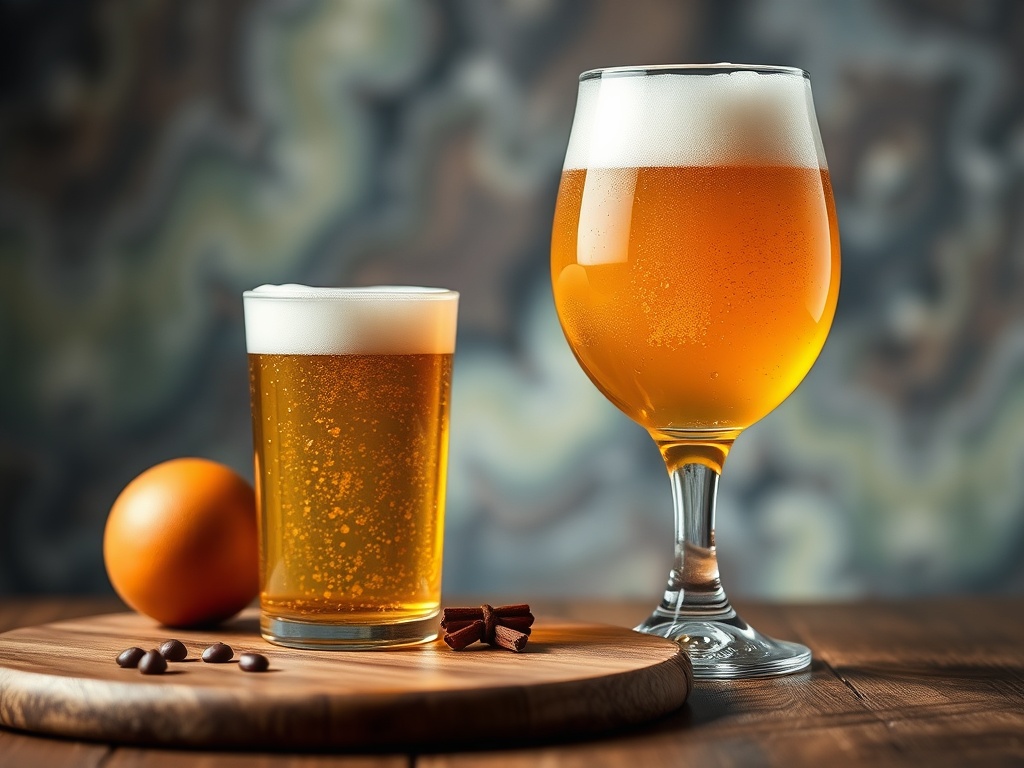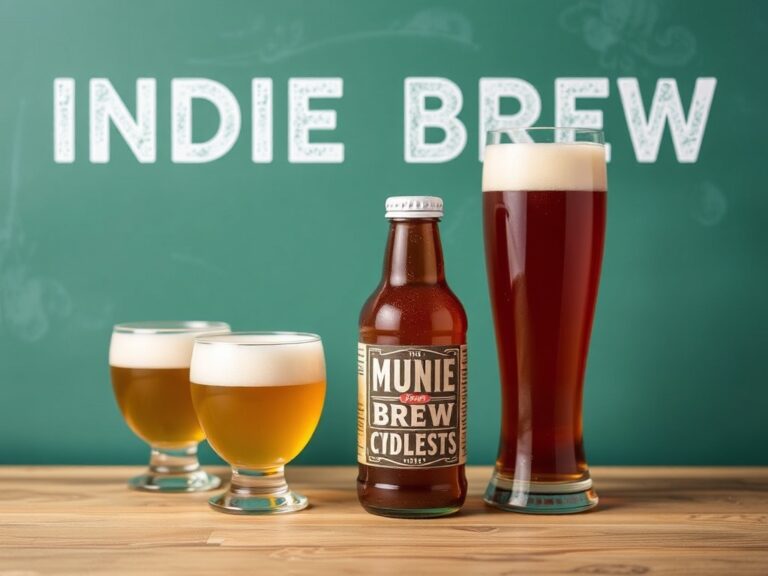Mastering the Art of Craftbeer: Unlock Unique Flavors and Boost Your Brewing Expertise

Understanding the Basics of Craftbeer
In my experience with craftbeer, I’ve found that grasping its fundamental principles is essential before diving into more complex flavors and brewing techniques. When I first started exploring craftbeer, I was amazed by how much variety exists even within the basics—different grains, yeasts, and brewing methods all contribute to a unique profile. I want to share what I’ve learned about the core ingredients and brewing processes that define craftbeer and how understanding these elements can help us craft better brews.
From what I’ve discovered, the foundation of great craftbeer lies in quality ingredients and precise fermentation. I recommend starting with small batches to experiment with different hops or malts, as this hands-on approach helps me appreciate the nuances that make craftbeer so diverse. In my journey, I’ve also learned that patience and attention to detail are key—rushing the process often undermines the flavor potential.
Ingredients That Define Craftbeer
In my research, I’ve found that the choice of ingredients is what truly makes craftbeer stand out. I’ve experimented with various malt types, hops, yeast strains, and even adjuncts like spices or fruit. Each ingredient brings its own character, and I believe mastering their combination is what elevates your brewing skills.
I recommend sourcing fresh, high-quality ingredients whenever possible. From my experience, using fresh hops can significantly enhance aroma and flavor, making your craftbeer more vibrant. I’ve also learned that understanding the flavor profiles of different yeast strains helps me tailor brews to specific styles, whether it’s a hoppy IPA or a smooth stout.
The Brewing Process Fundamentals
In my experience, the brewing process itself is both an art and a science. I’ve discovered that controlling fermentation temperature and timing are critical to developing the desired craftbeer profile. I recommend keeping detailed notes on each batch—this practice has helped me refine my techniques over time.
From what I’ve learned, sanitation is one of the most overlooked aspects but also one of the most vital. Contaminants can ruin a batch quickly. I advise investing in good cleaning supplies and maintaining a sterile environment. As I’ve found, patience during fermentation yields a more complex and refined flavor, which is what makes craftbeer truly an art form.
Exploring Unique Flavors in Craftbeer
In my experience, one of the most exciting aspects of craftbeer is its incredible variety of flavors. When I first started tasting different brews, I was blown away by how much complexity can be achieved through creative ingredient combinations. I want to share some of my favorite ways to unlock and develop unique flavors in craftbeer.
Innovative Hop Combinations for Flavor
I’ve discovered that experimenting with hop varieties is a fantastic way to add distinctive aromas and flavors. I’ve found that blending different hops—like citrusy Amarillo with piney Simcoe—can create a bold, layered profile. I recommend trying different hop schedules during brewing to see how each addition influences the final flavor.
From my research, I know that late hop additions and dry hopping are especially effective for maximizing aroma without overpowering the beer’s balance. I’ve also learned that understanding the specific characteristics of each hop variety allows me to craft craftbeer that truly stands out. This experimentation has been one of my favorite parts of brewing and tasting.
Using Adjuncts to Create Distinctive Flavors
In my experience, adding ingredients like spices, fruits, or even coffee can transform a basic craftbeer into a memorable experience. I’ve brewed with orange peel, coriander, and even chili peppers, and each time I’ve been amazed at how these adjuncts elevate the flavor complexity.
I recommend starting with small amounts to avoid overpowering the beer’s base character. From what I’ve learned, balance is key—adding too much can mask the subtle nuances of the malt and hops. I’ve found that patience during aging and conditioning also helps integrate these flavors smoothly, resulting in a truly unique craftbeer.
Home Brewing Tips to Elevate Your craftbeer Skills
I believe that home brewing is one of the most rewarding ways to master the art of craftbeer. From my experience, small adjustments and consistent practices can dramatically improve your brews. I want to share some of the tips that have helped me develop my skills and produce better craftbeer at home.
Invest in Quality Equipment
In my journey, I’ve found that having reliable and precise equipment makes a significant difference. I recommend investing in a good fermentation vessel, thermometer, and hydrometer. These tools help me monitor temperature and gravity accurately, which are crucial for consistent results.
From what I’ve learned, sanitation cannot be overstated. I’ve seen how even minor contamination can spoil a batch. I recommend cleaning all equipment thoroughly and using proper sanitizers. Proper equipment and cleanliness set the foundation for brewing consistently good craftbeer.
Experimentation and Record-Keeping
In my experience, keeping detailed records of each batch helps me identify what works and what doesn’t. I’ve tried different hop schedules, yeast strains, and fermentation temperatures, and documenting these variations has been invaluable.
I recommend that beginners start with simple recipes and gradually introduce variables. Over time, this approach has helped me develop a more refined palate and understanding of how to craft craftbeer that suits my taste. I believe experimentation is part of the fun and essential to mastering the art.
Patience and Tasting
From my experience, patience is essential in brewing. I’ve learned that rushing the fermentation or skipping proper conditioning can result in flat or off-flavored craftbeer. I recommend tasting your brew at different stages to understand how flavors develop.
The more I practice, the more I appreciate the importance of tasting and adjusting. This iterative process allows me to produce craftbeer that’s well-rounded and rich in flavor. Patience truly pays off in the world of craftbeer.
Advanced Techniques for Craftbeer Connoisseurs
In my experience, once you have a solid grasp of basic brewing, exploring advanced techniques can take your craftbeer to new heights. I want to share some insights into these techniques that I’ve found particularly rewarding.
Wet Hopping and Cold Infusions
I’ve discovered that wet hopping—using freshly picked hops—can impart a fresher, more vibrant aroma to craftbeer. I recommend trying this during late-stage hop additions for a unique, aromatic profile.
Additionally, cold infusions, such as adding herbs or fruits after fermentation, can create complex layers of flavor. From my research and experiments, these methods allow for creative expression and truly personalized brews. I believe that incorporating these advanced techniques can distinguish your craftbeer from commercial options.
Blending and Barrel Aging
In my experience, blending different batches and aging in barrels can add depth and sophistication to craftbeer. I’ve tried small-scale barrel aging with bourbon or wine barrels, which imparted rich, nuanced flavors that I couldn’t achieve otherwise.
I recommend starting small—using small barrels or even oak chips—to experiment without risking large quantities. From what I’ve learned, patience during aging is essential, but the results—complex, layered flavors—are well worth the wait. These techniques can truly elevate your craftbeer craft to a professional level.
References and Resources
Throughout my research on craftbeer, I’ve found these resources incredibly valuable. I recommend checking them out for additional insights:
Authoritative Sources on craftbeer
-
Brewers Association
BrewersAssociation.orgA comprehensive resource on brewing standards, industry news, and educational materials for craftbeer enthusiasts and professionals alike.
-
Journal of the American Chemical Society
ACS PublicationsProvides in-depth scientific research on fermentation, ingredients, and brewing techniques relevant to advancing your craftbeer knowledge.
-
CraftBeer.com
Major Industry PublicationA great source for trends, recipes, and stories that inspire innovation in craftbeer.
-
Northern Brewer
Homebrewing Supplies & TipsOffers detailed guides, equipment, and ingredients perfect for those looking to refine their craftbeer at home.
-
BeerAdvocate
Community & ReviewsA vibrant community where I’ve learned a lot from reviews, discussions, and tasting notes on various craftbeer styles.
-
World of Beer
Global Beer InformationProvides insights into international styles and brewing traditions that inspire me to experiment with craftbeer recipes from around the world.
-
Craft Beer Joe
Expert Brewer TipsOffers practical advice from seasoned brewers, perfect for elevating my craftbeer brewing game.
Frequently Asked Questions
Frequently Asked Questions
What is the best way to start brewing craftbeer at home?
In my experience, starting with a beginner’s kit is the best approach. I recommend choosing a simple recipe and focusing on cleanliness, temperature control, and patience. From what I’ve learned, small batches allow you to experiment without wasting ingredients, making the learning process enjoyable and rewarding.
How can I develop my palate for craftbeer?
I’ve found that tasting a wide variety of craftbeer regularly helps me recognize different flavor profiles. I recommend keeping tasting notes and comparing styles—this has been invaluable in honing my palate and understanding what makes each brew unique.
What are some common mistakes to avoid when brewing craftbeer?
From my experience, poor sanitation, rushing fermentation, and inconsistent temperature control are the biggest pitfalls. I recommend investing time in cleaning, monitoring fermentation carefully, and being patient—these steps are crucial for producing high-quality craftbeer.
How can I find my own unique craftbeer style?
I believe experimentation is key. I recommend trying different ingredients, brewing techniques, and aging methods. Over time, I’ve discovered that paying attention to what I enjoy and refining my process helps me develop a signature craftbeer style that reflects my personality and tastes.
Conclusion
In conclusion, my research on craftbeer has shown me that mastering this craft is a journey of continuous learning and experimentation. From understanding the basics to exploring advanced techniques, I believe that anyone can develop their skills and create truly unique flavors. I hope this guide helps you unlock your potential and enjoy the rewarding world of craftbeer brewing. Whether you’re a hobbyist or aspiring professional, remember that patience, curiosity, and passion are your best tools. Cheers to your brewing adventures!
Find out more information about “craftbeer”
Search for more resources and information:





